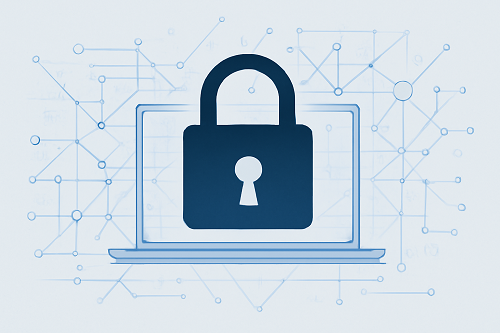In today's digital-first universe, cybersecurity isn't just a technical imperative, it's a pillar of business resiliency. And for small and medium businesses? The reality is, cyber attackers don’t discriminate by company size or security budget. If your team isn’t prepared, your business is exposed. The most powerful defense isn’t a fancy piece of software, it’s your people. Unfortunately, traditional cybersecurity training often misses the mark, leaving employees disengaged and unprepared.
So, what actually works? It’s simple: break down complex concepts into clear, practical content your team can grasp and apply without an IT degree. Skip the jargon. Focus on clarity and usefulness.Even when designing training materials or design logos for your internal campaigns, clarity should always be a priority to keep your team engaged.
Why Cybersecurity Awareness Matters
Human error is responsible for the vast majority of breaches—IBM puts it at a staggering 95%. Whether it’s a phishing email, reused passwords, or a mishandled file, human mistakes are the weak link. Phishing is particularly a long-term threat. The Verizon 2023 Data Breach Investigations Report provides evidence that 74% of all breaches involve the human element, i.e., errors and social engineering attacks. The employees will not be able to recognize or respond to such threats if they are not trained accordingly.
The Engagement Gap in Traditional Training
As much as there is a large stake involved, conventional methods of training hardly ever engage. Dense policy documents and the occasional resulting webinar hardly ever instill everlasting knowledge. A 2022 Osterman Research report found that only 31% of workers recall major cybersecurity training material beyond 30 days. Today’s workforce wants brief, interactive, and visual content. Infographics, animated explainers, and real-world scenario simulations consistently outperform static slides and text-heavy modules.
Visual learning is a true differentiator. Social Science Research Network research shows that 65% of people are visual learners, which makes formats like infographics and short videos particularly effective for cybersecurity topics. A quick video animation showing how a phishing attack unfolds is far more memorable and actionable, than a long memo. When people see how threats play out, they’re more likely to recognize and report them in real life. For example, a quick 90-second animated video highlighting the lifecycle of a phishing attack would go a long way in clarifying how threat actors manipulate emotions and exploit trust. Employees not only understand the threat but also visualize how to act swiftly and correctly.
Results That Justify the Investment
Companies that invest in engaging, ongoing training see real results.
- According to a 2023 report by Proofpoint, organizations whose mature awareness programs resulted in phishing click-through rates decreasing by 64% were noted.
- KnowBe4's 2023 Phishing by Industry Benchmarking Report found that continuous training reduced simulated phishing failures from 34% to below 5% over a period of one year.
- According to IBM's Cost of a Data Breach Report, companies with strong training initiatives save $1.49 million per breach on average in losses owing to quicker response and reduced incident impact.
- Archway Research found that effective training led to a 60% increase in threats reported by employees, enabling security teams to respond more rapidly.
These results make one thing clear: frequent, quality training pays its way in reduced risk and increased operating resilience. It’s not just about lowering risk, it’s about protecting your bottom line.
How to Make Cybersecurity Training More Effective and sustainable?
Following are some key practices in making training material stick:
- Keep it modular: Teach just one topic per module, e.g., a module for phishing, followed up by a module on password hygiene.
- Use visual content: Infographics and videos drive better understanding and keep the learners engaged.
- Simulate real threats: Scenario-based learning helps employees recognize attacks in context. Use storytelling to portray all too common attacks such as business email compromise and credential harvesting.
- Gamify the process, make it a little bit competitive: Quizzes, leaderboards, and digital badges encourage participation.
- Make it routine: Monthly or quarterly updates ensure security stays top of mind.
Making Awareness Part of Daily Operations
Finally, security awareness does not have to be an annual solo endeavor. Weave security awareness into daily operations. Instead, make it part of the company culture:
- Share weekly tips in internal communications.
- Host team challenges for Cybersecurity Awareness Month.
- Recognize employees who report threats.
- Foster open conversation about scams, threats,, and suspicious and suspicious activity.
When security awareness becomes part of your organization’s DNA, you build a workforce that’s alert, prepared, and resilient. That’s how you protect your business, not just from the next headline breach, but from the everyday threats that never make the news.
Conclusion
A cyber-aware workforce is your best defense against today’s sophisticated threats. Your employees are the front line, and they need more than dry presentations to stay sharp. Training needs to be ongoing, interactive, and practical. Think short videos, eye-catching infographics, and “what would you do?” scenarios. Start small, keep at it, and over time, your team will become your strongest cybersecurity asset.


































